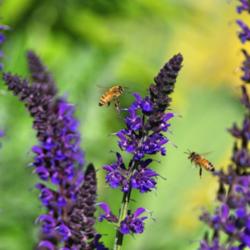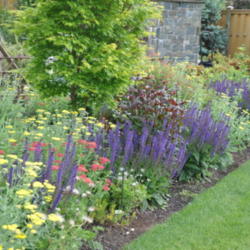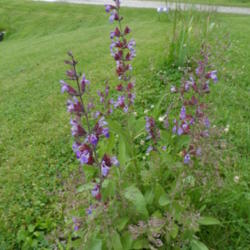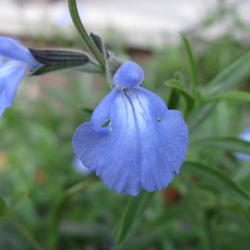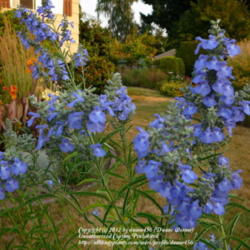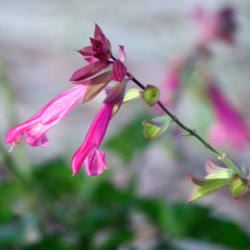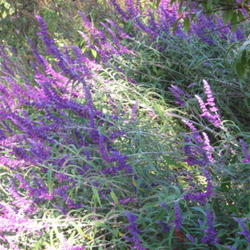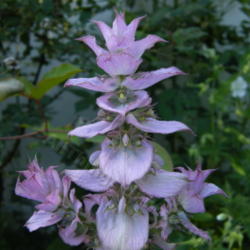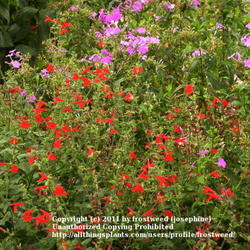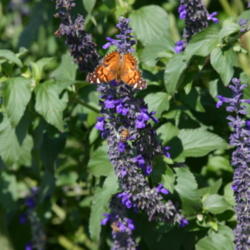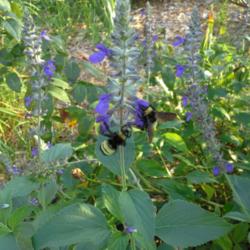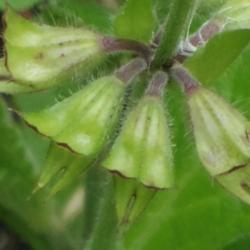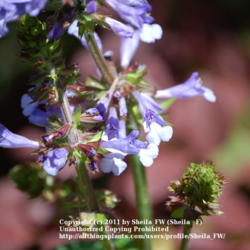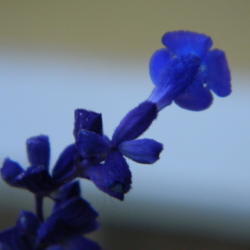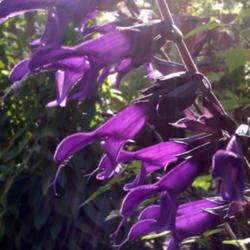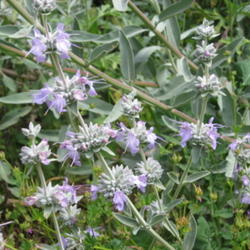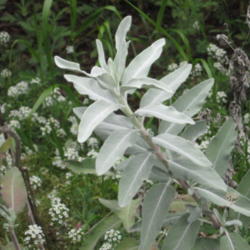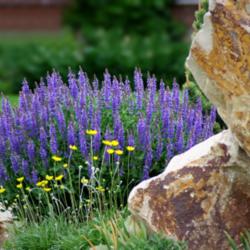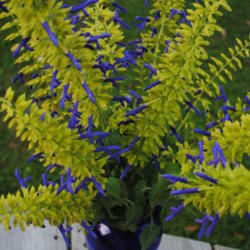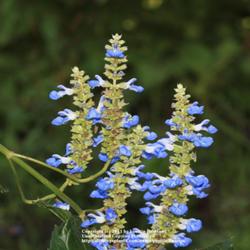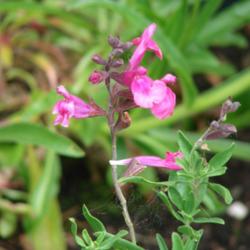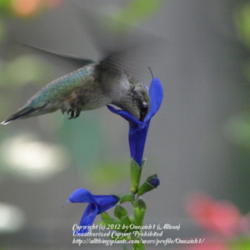#5: Culinary Sage (Salvia officinalis)
@Mindy03 says, "Honey bees get nectar and pollen from this plant."
@gardengus added, "This semi-woody subshrub is an easy-to-grow evergreen perennial herb that is used in many recipes.
It is also added to some medicinal teas.
It is easy to dry and store for winter use. Simply pick the leaves or cut whole branch tips and hang to dry.
For tea, just hand crush the dry leaves and add a small amount to loose-leaf teas before steeping. (This is a strong herb and a little will add much flavor.)
For seasoning in cooking, remove stems and crush leaves in a mortar and pestle. This is called ''rubbed sage.'' Leaves must be completely dry to use this method.
I use most of my sage to season fresh sausage and homemade bread stuffing."
